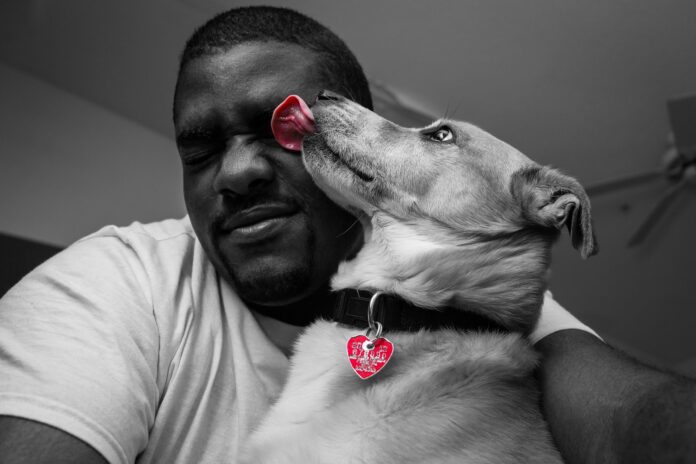You may have seen photos of dog licking a shaved patch on a leg. It might seem weird, but this is exactly how dogs work. They lick the area and clot it with their saliva, which has anti-bacterial properties. Dogs lick wounds to promote healing. Your pet’s licking behavior suggests that it’s experiencing pain. However, your dog is probably in good hands.
Dog Licking a Shaved Patch on Leg – Veterinary treatments for dog licking shaved patch on leg
Veterinary treatments for dog licking a shaved patch on leg may be necessary to stop your dog from self-mutilating. These treatments can include a topical antiseptic and antibiotics. Your veterinarian may also recommend using special shampoos to prevent new hot spots from forming. However, antiseptics can burn your dog’s skin and they should not be used by dogs with sensitive skin.
If your dog is constantly licking a shaved patch on leg, there are several veterinary treatments available. The first one involves applying a sweatband over the affected area. This will prevent your dog from licking it. However, the underlying infection should be treated before your dog develops an ugly sore. This treatment will only be effective if your dog is suffering from a serious condition.
The second treatment is to consult a holistic veterinarian to rule out other underlying problems. Lick granulomas can be caused by an allergic reaction or arthritis. In either case, it is important to consult your veterinarian right away. If your dog does not hide when you are not around, he may be licking a shaved patch on leg. A holistic veterinarian can diagnose a condition and prescribe a veterinary treatment for dog licking shaved patch on leg
Dog Licking a Shaved Patch on Leg – Causes of lick granulomas
The ideal therapy for lick granulomas is the identification of the cause and treatment of the underlying problem. However, in most cases, the underlying cause is not immediately apparent. While there are therapeutic approaches available, these may not work for all dogs. In this article, we’ll discuss a few of them. Listed below are some of the most common causes of lick granulomas.
Lick granulomas typically start out as a well-defined, wet spot that is often red and may have hair loss. They may resemble moist dermatitis but are deeper-seated and more obstructive. Lick granulomas may have distinct borders and can be oval or round in shape. If left untreated, they may become thick, crusty or even plaque-like.
Topical medications can help. These can be in the form of creams or lotions, or may be a combination of steroids, antibiotics, and anti-inflammatories. The skin should not be licked while the medication is in effect. Using gloves when applying medication is recommended to prevent infection. Topical medications can cost $40 to $80. But, if your pet develops lick granulomas repeatedly, a surgical treatment may be a better option.
Dog Licking a Shaved Patch on Leg – Treatment options
Various remedies are available for treating a dog’s lick granuloma on a leg. The antiseptic solution chlorhexidine is an effective and inexpensive treatment. It should be applied to a small patch of unbroken skin around the incision. Using a cotton swab is the best way to apply the liquids, but there are other methods that may help too. Chamomile, for example, is an herbal remedy for wounds, ulcers, and spasms. You can also make a soothing antimicrobial rinse with chamomile or apply it directly to the wound. You can also try using a chamomile tea bag and applying it six to eight times a day.
Often, hot spots are caused by poor grooming or boredom, so a veterinarian may prescribe an anti-inflammatory drug or sedative for the dog. Depending on the severity of the hot spot, additional exercise and enrichment may be recommended. Oral medications are also often prescribed, and you may also want to consider getting your dog a cervical collar. This collar will prevent your dog from licking the shaved area.
Using a topical remedy for a dog’s lick granuloma may help reduce its occurrence. Boosting your dog’s nutritional intake and implementing a routine that rewards your dog’s behavior will also be beneficial. Using an active outdoor exercise program can also be beneficial. Emotional support may also help. This article was written by CJ Puotinen, a long-time WDJ contributor and the author of Natural Remedies for Dogs and Cats. She lives in New York City with her husband and two cats, a lab and a tabby cat.





